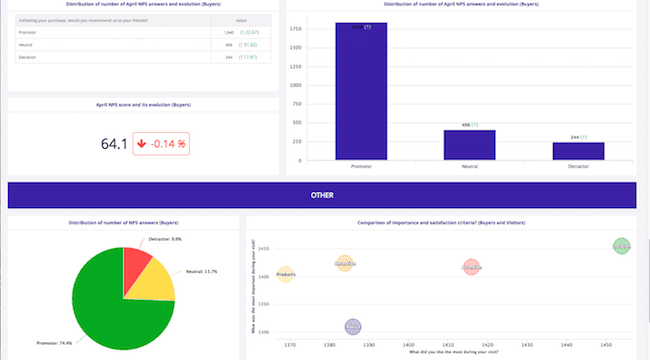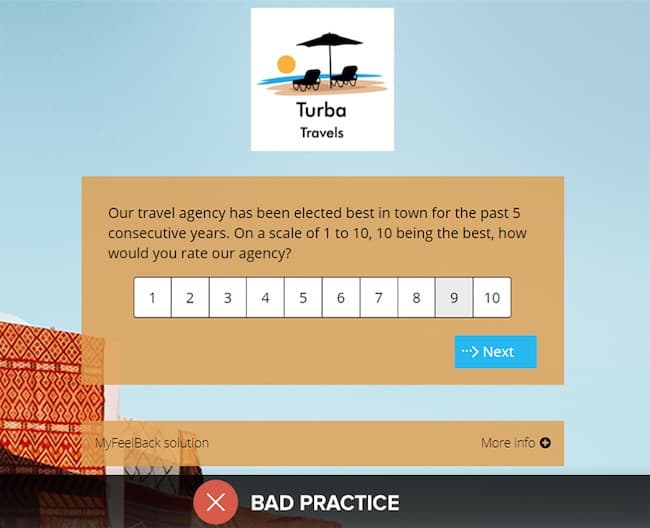Once you have sent out a survey and collected your answers, the next step is to analyze the results. This part of the process is just as important as preparing and deploying your survey. Analyzing the results of your survey too quickly can be counterproductive and lead you to false conclusions. Here are 5 tips...
Once you have sent out a survey and collected your answers, the next step is to analyze the results. This part of the process is just as important as preparing and deploying your survey.
Analyzing the results of your survey too quickly can be counterproductive and lead you to false conclusions. Here are 5 tips to help you analyze your survey results effectively.
1. Use the right tools to analyze your survey
To accurately analyze the results of a customer satisfaction survey, it’s essential to use effective survey tools. The software that you use must allow you to organize the data you have collected and display the results in a clear and readable way. It’s difficult to interpret results when they are disorganized, scattered across hard-to-read spreadsheets or spread out among a large number of documents.
Some tools allow the user to automatically generate reports or easily export results obtained from surveys. Using a well-adapted tool is essential for the effective analysis of your survey results. Here’s an example of a dashboard created using the MyFeelBack platform:

2. Be as objective as possible when analyzing the results of your survey
When analyzing survey results, it’s extremely important to be as objective as possible. A common error is seeking to confirm your initial thoughts on the subject when analyzing the results. Imagine you are a sientist facing results of tests.

This means focusing on the results that you “like” and avoiding any that are not what you wanted or expected from the survey. It is difficult to avoid this subjectivity, and any analysis always includes some degree of subjective interpretation. To address this, analyzing results as a group is strongly recommended.
To achieve an overall result that accurately reflects the answers of your survey participants, it is also important to correctly determine the weight of each of the survey’s questions and their associated answers. In a survey, some questions will be more important than others. This allows you to emphasize the key subjects of your survey, without making it excessively long, and also ensures that the weight of less-important questions is not overestimated.
Questions should also be phrased in an objective and impartial way:


Discover the 7 key points for asking the right questions in your survey.
3. Evaluate your survey results from a decision-making perspective
This seems pretty straightforward, but it’s worth repeating: the goal of a client survey is to gain a more in-depth understanding of your clients or prospects. But this customer knowledge should not be theoretical or abstract – it is only valuable if it is followed by action and helps with decision-making processes.
Analyzing survey results is not the last step of the survey process. Summarizing and reporting on your results must be done with future actions in mind. Evaluating the various different results of the survey should be done in a way that is partly (but, of course, not exclusively) based on your decision-making criteria.

4. Be able to recognize any shortfalls in your survey results
The results of a survey are not always conclusive enough. If you find that your results lack certain elements, it may be best to develop and send out an additional survey before planning any future actions, even if this may result in inconveniences due to project delays.

If your results are not precise enough, or if you feel that important pieces of data are missing, it is generally better to refine your results via a new survey rather than beginning to make decisions based on incomplete data.
At the same time, to avoid any delays, it is essential to set aside enough time to create your initial survey. Before sending the survey to participants, it is important to clearly define the goal of your survey and choose the right questions. Even if you follow our analysis advice to the letter, it will be very difficult to use the results of a survey that was not carefully prepared before being sent to clients.
5. Compare your survey results with objective indicators
To ensure that your survey is as useful as possible for making decisions, you’ll need to compare its results with your company’s other data and indicators. The most accurate results can often be seen after overlapping various different types of data.
It is therefore always necessary to look at the bigger picture and analyze the results of any survey alongside objective data and indicators such as sales and Google Analytics data, results of previous surveys, etc.

Survey results are an extremely important way of gaining deeper, more comprehensive and more detailed customer knowledge. Once this data been sufficiently analyzed and summarized, it is a valuable source of information for all stakeholders and contributes to offering a comprehensive overview of the company. Without this perspective, it is difficult to make the best possible decisions in an objective manner.








